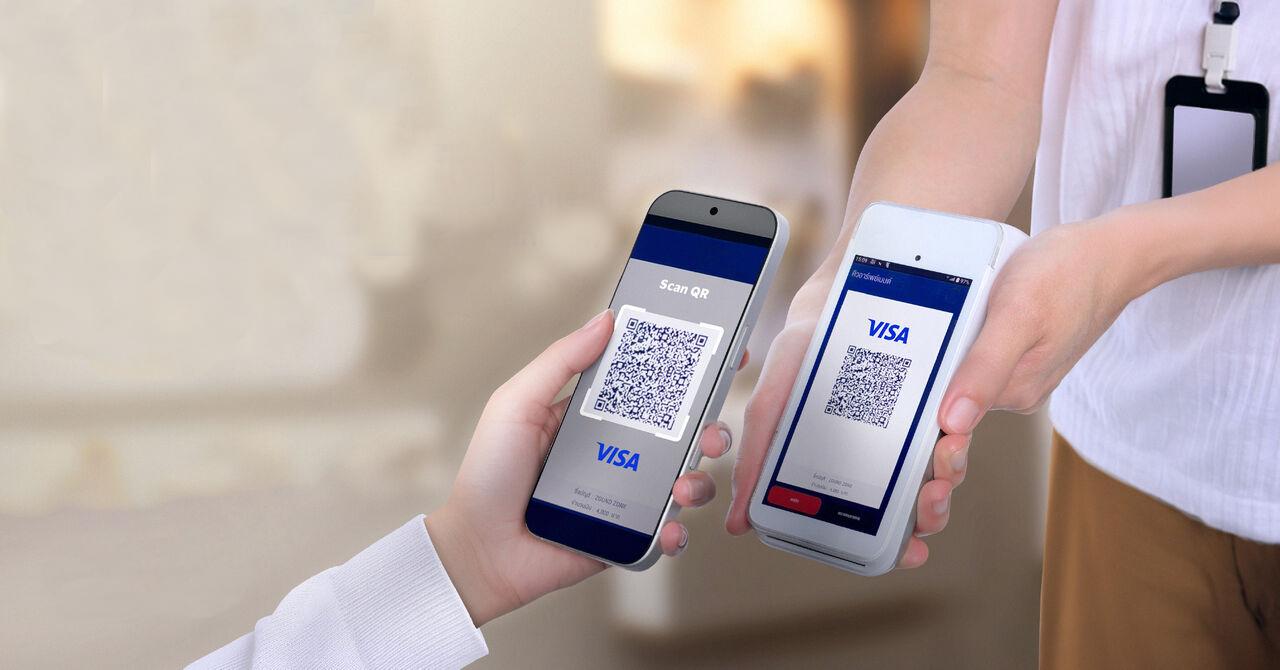Visa QR Credit is designed to offer consumers a seamless and secure way to complete transactions using QR codes linked to Visa cards, while also delivering tangible cost savings for card issuers and merchants who embrace digital payments. The service sits at the intersection of convenience, security, and efficiency, enabling faster checkouts and reduced processing friction compared with traditional card-present methods. By integrating QR technology with the Visa network, users can simply scan or generate QR codes to authorize payments, minimizing exposure to sensitive card data and lowering the risks associated with physical card handling. For issuers, the model promises lower transaction costs and broader reach, while merchants can benefit from faster settlement cycles and simplified reconciliation. The overarching aim is to strengthen Visa’s position in a rapidly evolving payments landscape where cashless options are becoming the norm and consumer expectations for speed, security, and accessibility continue to rise.
In Thailand, Visa Thailand has observed a distinct pattern in how inbound tourists transact. While overall Visa card payments by foreign visitors have shown slower growth, this has been largely tied to a stagnation in international arrivals rather than a waning appetite for spending among those who do travel. What remains notable is that spending per visitor has increased, a trend Visa attributes to the presence of “higher quality travellers”—a description that suggests visitors are arriving with greater willingness to spend on experiences, dining, and lifestyle goods. This dynamic indicates that even as the total volume of tourist-related card transactions may not explode upward in the near term, the average expenditure per person is shifting upward, reinforcing the potential for targeted digital payment solutions to capture a larger share of tourist spending in premium segments.
In the specific April and May window this year, foreign tourist spending in Thailand using Visa cards grew by 10% year on year, a pace that marks a deceleration from the 15% growth observed in the first quarter and the 20% growth recorded in 2024. This slowdown in growth, according to Visa Thailand’s data, mirrors a broader trend of easing international arrivals. The interpretation is straightforward: fewer tourists entering the country reduces the total number of Visa-based transactions by visitors, even if those who do come are spending more on average. The implication for Visa and its banking partners is clear—while tourist spend per traveller remains robust, the company needs to balance efforts to attract more international visitors with strategies that optimize the use of digital payments among the existing tourist base.
Punnamas Vichitkulwongsa, who serves as the country manager for Visa Thailand, emphasized a nuanced view of the market. He noted that despite a static or flat overall transaction volume among inbound visitors, the amount spent per traveller continues to rise, aligning with evolving lifestyles and spending behaviors seen among foreign guests. This insight suggests that Thai merchants and payment partners should not rely solely on transaction counts to gauge momentum; instead, attention should be paid to the value of each interaction and the potential for higher-ticket purchases when travellers opt for more advanced digital payment options. The takeaway is that value-centric spending is rising among international visitors, which can be leveraged through targeted payment solutions that emphasize security, speed, and seamless integration with tourist storefronts and digital platforms.
Turning to the broader 2024 landscape, Visa’s data highlights that U.S. tourists reported the highest levels of expenditure via Visa cards among all international travellers in that year, with visitors from the United Arab Emirates (UAE) and Singapore following closely behind. This ranking underscores the diversity of Visa’s tourist base and points to the importance of tailoring payment solutions to different nationalities and spending patterns. The year 2024 also saw foreign visitors generating higher total spend in the Thai market compared to 2023, signaling a recovery and strengthening of cross-border consumer activity as global travel resumes after disruptions in prior years.
In parallel with tourism dynamics, Visa conducted a survey on Thailand’s payment habits that shed light on consumer preferences for in-person versus online transactions. The findings indicate a clear preference among Thai consumers for face-to-face payments, with cash still playing a dominant role in everyday commerce. Specifically, cash payments accounted for about 70% of in-person transactions, QR code payments represented around 60%, and mobile wallets captured roughly 58%. The persistence of cash usage, especially in upcountry regions, reflects a combination of habit, accessibility, and perceived reliability in areas where digital infrastructure may be uneven or where cash remains deeply embedded in daily routines. This context helps explain why QR code adoption—though accelerating—still coexists with a substantial reliance on cash in many parts of the country.
Nevertheless, Punnamas noted encouraging progress in QR code familiarity among Thai consumers, driven by the national payment platform PromptPay, which has been in place since 2016. PromptPay’s widespread recognition makes QR-based payments more intuitive and widely accepted, contributing to greater security and convenience for users. The platform’s digital payments framework has been a driving force behind a broader shift toward a cashless society in Thailand. Visa’s own initiatives align with this trajectory, reinforcing the strategic value of QR-based payments within the country’s payments ecosystem. Visa emphasizes that PromptPay has played a central role in accelerating digital payment adoption and easing the transition away from cash, a trend that Visa views as foundational to Thailand’s long-term move toward cashless transactions.
Visa’s involvement in QR code payments extends back to 2018, when the company first introduced QR code payments through Visa cards. This early entry laid the groundwork for more expansive QR-based offerings that could integrate with existing Thai payment habits and infrastructure. This year, Visa has taken a significant step forward by launching Visa QR Credit—the second phase of its QR code payment service. This new phase includes expanding the network of financial partners to eight institutions, a move designed to broaden access and deepen merchant acceptance across the country. The eight participating institutions are Bangkok Bank, Kasikornbank, Siam Commercial Bank, Krungsri (Bank of Ayudhya), TMBThanachart Bank, Krungthai Card, Krungsri First Choice, and Aeon Thana Sinsap Thailand.
The rationale behind these partnerships is straightforward: Visa QR Credit is positioned to deliver greater convenience and security to users while reducing costs for card issuers and merchants in the digitized transaction environment. This combination of benefits can encourage wider adoption, particularly in markets outside major metropolitan centers where provincial accessibility remains a critical factor. Visa’s leadership is explicit in its aim to expand its customer base in provincial markets, leveraging QR-based payments to drive inclusion and convenience for consumers who might not have previously engaged with digital payment channels. By enabling a smoother, faster, and more secure checkout experience, Visa QR Credit also supports the broader ambition of strengthening Thailand’s digital payment ecosystem and accelerating the country’s ongoing shift toward cashless norms.
Thailand is positioned uniquely in the global Visa network as the first country to implement QR code payments, a distinction Visa has highlighted as evidence of strong local momentum and consumer receptivity. The company notes that the Thai market has yielded the strongest response among Visa’s QR initiatives, reflecting Thai consumers’ familiarity with PromptPay and their established digital payment behaviors. This leadership position reinforces Thailand’s role as a trailblazer in the adoption of QR-based payments and underscores the potential for further expansion of QR-enabled transactions across a broader set of financial institutions and consumer segments.
As the Thai payments landscape continues to evolve, Visa’s QR Credit initiative is expected to play a meaningful role in expanding access to digital payments, particularly in areas where traditional card acceptance may be less ubiquitous or where consumers are still transitioning from cash to electronic methods. The emphasis on provincial markets aligns with a broader strategy to bridge urban-rural divides in payment access, ensuring that more consumers can benefit from secure, efficient, and convenient digital payment options. The combination of consumer familiarity with PromptPay, the growing acceptance of QR codes in everyday commerce, and the cost efficiencies associated with QR-based transactions positions Visa QR Credit as a meaningful catalyst in Thailand’s ongoing digital transformation of its financial services sector.
Beyond the immediate advantages of the Visa QR Credit program, the Thai market’s early adoption and positive user response carry implications for other markets in the region. If Thailand’s experience proves sustainable and scalable, regional banks and merchants may replicate this model to broaden QR code payment acceptance and deepen digitization across various customer segments. The potential for a broader network of banks and merchants to participate in QR-enabled payments could support a national transition toward more inclusive, secure, and efficient payment systems that benefit consumers, businesses, and the overall economy. Visa’s strategy appears to be aligning with national goals to modernize payments, reduce cash dependency, and foster a resilient digital economy that can withstand external shocks while accommodating evolving consumer preferences.
In summary, Visa QR Credit represents a concerted effort to expand the reach and reliability of QR-based payments in Thailand, leveraging the familiarity of PromptPay, the established Visa network, and a coalition of major Thai financial institutions. The program’s launch and subsequent scaling reflect a broader commitment to delivering secure, convenient, and cost-efficient digital payment options for consumers, issuers, and merchants alike. The Thai market’s strong user response and the early indications of growth among specialized tourist segments underscore the potential for continued expansion, including deeper penetration into provincial markets and broader merchant acceptance networks that complement Thailand’s broader cashless transition and digital economy agenda. The collaboration with eight prominent financial institutions signals a robust and durable framework for QR payments that can adapt to changing consumer behaviors and market dynamics in the years ahead.


